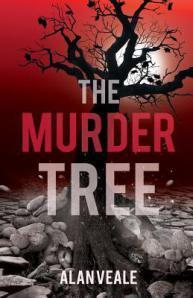
The Murder Tree introduces an unlikely pair of heroes: the American daughter of a wealthy businessman and a Manchester-born librarian working in Glasgow. Each have their share of domestic strife to deal with, while sharing a thirst to find out the truth about a 150 year-old murder. But deaths are still taking place today as far afield as New York, and trying to dig through the roots of this unique family tree becomes more hazardous than either Chrissie or Billie could imagine.
Prologue
It was a particularly bright but quiet morning on Anderston Quay, yet still too early for the day shift to begin their labours around the harbor. The sun was ascending leisurely above the tenement houses to the south and east of the Clyde, polishing away the gloom of the previous night and casting long shadowy fingers from a multitude of ships’ masts that towered over the cobbled old wharf. Stately schooners grunted in sullen protest at their less wholesome neighbours as the river’s brackish waters reached the ebb, and nuzzled the wooden hulls against each other. Like a forest of elm trees in a winter wind, the tangle of spars and lines swayed to their own peculiar rhythm as the rooted vessels rode fretfully under their cabled restraints, murmuring their protests at the turning tide.
Another sound approached from the north: soles of leather slapping against unyielding cobblestones, tripping a little unsteadily under the impatient progress of their mistress. The slight figure of a young woman, curiously hunched forward under a light gray woolen cloak, rounded the corner of Finnieston Street and blinked against the sun’s dramatic appearance.
When did you first become aware of the Sandyford murder?
I first got to hear the story around November 1992. I was taking a short coach holiday in Scotland and I’d taken a book to read with me - ‘Heaven Knows Who’ by Christianna Brand, which gave a contemporary account of the trial of Jessie McLachlan, and the events leading up to it. This was one of two books that had recently been passed on to me by an elderly friend of my then wife’s family who was losing her eyesight. She was a lovely Geordie lady named Chrissie MacPherson, who died long before I came to write the novel, but that should explain the choice of name for my main character, and the dedication at the beginning of ‘The Murder Tree’.
I always wonder how an author chooses the character’s names and this is one of the best answers I’ve heard.
What prompted you to turn this historical crime into a book?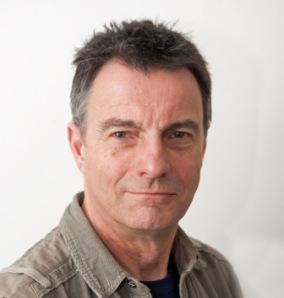
Christianna Brand’s version of events read to me like a good old-fashioned mystery story – with a surprising twist at the end. I had written several scripts for the stage, and my creative instincts told me that the story of Jessie McLachlan could be given a fresh treatment. The problem was that I did not feel it was right for the theater. I had recently performed in a play written by Jeffrey Archer that featured a trial and the background events preceding it. Unfortunately I did not feel that his story worked well in that medium, and I was put off going down the same route. A visit to Glasgow and the murder scene the following year helped to form the outline of the plot that was to become ‘The Murder Tree’, but somehow I felt that a screenplay would be easier to work on than a novel. How wrong I was! I kept making notes and working on scenes, and bringing them in and out of a drawer many times over the next two decades. But it wasn’t until my children were older, divorce had lost its sting, and I had taken early retirement from the Civil Service that I decided the time was right to use my notes to create a novel.
Did you prefer writing the present day parts or the historical sections? 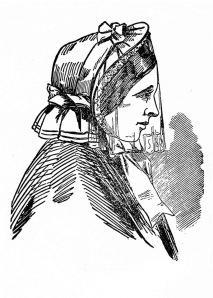
I think the correct answer to that one would be the present day scenes. But I say that simply because they were in part easier to write. I have a busy imagination, and it can be fun playing God and have the power of life and death over the characters I create. Also, Glasgow as a backdrop to the present day inspired me to feel comfortable about the places I took those characters. It really is a fascinating city, and whenever I have been there I have been greeted by so many friendly faces. There is no evidence of the pictures painted by the television series of ‘Taggart’, and I could imagine Chrissie and Billie walking those streets without any feeling of threat – other than from the past…
But I also like a challenge – otherwise ‘The Murder Tree’ would never have been written! Selecting the relevant scenes from the past was certainly that. I was mindful of a need to be as accurate as possible about the nineteenth century incidents, as anyone reading my book with a historical knowledge might have cause to complain if I had misrepresented the facts for artistic license. I was also aware that I should not be too heavy on the detail from the past, so I tried to keep the court scene as tight as possible, without losing the inference of culpability against Old James Fleming. The dialog on this occasion was largely adapted (and anglicised) from the original trial notes as recorded by William Roughead.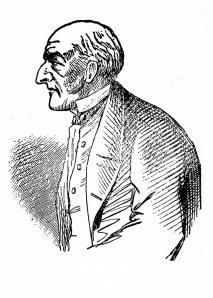
I am one of those readers who pick up on historical inaccuracies but as far as I was concerned you did a fantastic job of keeping the past authentic.
I imagine there was a lot of research needed since this book was based on an actual event, did you do all of this first or was it done while you were writing?
On reflection, I would think it was around fifty-fifty. It is true to say that I spent around twenty years with this project getting a dust off now and then, usually to re-read material, and then to work on a plot outline or consider re-writing a particular scene. I also visited both Glasgow and Edinburgh during that time, and collated photographs with other documents I felt might serve some purpose.
But once I had made the decision that this was going to be a novel, the work began in earnest. I had time on my hands and a healthier bank balance, so I took the research very seriously. Again I visited the murder scene itself, and made the longer trip to Inverness. I felt it necessary to visit the key scenes in person so that my descriptions were as complete as possible. Even a short holiday in New York came in useful.
How long did it take to write The Murder Tree? Did you set yourself a writing schedule, if so what did this look like?
It took longer than I thought it would! But then I should qualify that because this was such a steep learning curve for me. Writing a novel was more technically demanding than I expected, and while I actively looked for help and advice, at the end I still had to find a way of re-writing scenes that at one time I had felt sure were pretty near perfect. They weren’t of course. Ernest Hemingway is often quoted as saying “The first draft of anything is shit”, and he was right! In real terms it probably took me around a year to complete that first draft, and then another twelve months re-writing it. Once I was absolutely sure I had got it as tight as it could be I sent it off to a professional copy-editor for final ‘tweaking’. She then sent it back with a long list of recommendations for further re-writes… And she was right to do so – on the whole. Once I had taken on board most of her comments (including a good helping of praise), I was ready to publish.
No – there once was an effort to have some kind of schedule, but it was impossible to stick to while juggling other duties involving work and teenage children!
Is Billie based on anyone you know? He is a fascinating man and the perfect person to pair up with Chrissie!
Ah, there’s the rub… The short answer is yes, but I’ll give you the long answer first!
To begin with, you have to remember that my original outline for ‘The Murder Tree’ started off as a screenplay, and unlike books, such scripts rely heavily on dialog. If I had started off writing a novel I might have let Chrissie be a more dominant main character, and followed events principally from her point of view. A book can do that because it allows us inside a character’s head, but I was accustomed to writing dialog to tell a story, so I was committed to giving my female lead a male counterpart who would act as her foil, and prospective romantic interest.
With the medium of film or television in mind I started out visualising actors that I felt might suit the characters I had created, thus helping me to work through a scene in my head that I could then write about. In my early drafts I imagined Billie to be a Scot, and the first actor that sprang to mind was Robbie Coltrane. I think that was where the smoking element came from, because Robbie was playing a chain-smoking character in ‘Cracker’ at the time. Some of his style of humor is also still evident.
But certain elements were not right. Size matters. As I re-visited my plot and the characters therein I found that I needed both Michael and Edward Fersen to be big men. For me, I needed a contrast to complete the picture, so Billie had to be physically around average height or below. Bye-bye Robbie!
Billie’s part became more important as the plot developed over time. I found myself using my own experiences to shape this man’s personality. I was a Mancunian, so why not make Billie more like me? There was no reason why an Englishman might not work and live in Glasgow, so there was my answer – I built Billie’s character around myself – and found the whole story that much easier to write! Physically there are some differences: I am nearly six feet tall, and around sixteen years older than Billie, plus I don’t smoke, and have never worked in a library. But I’ve haunted several!
What a brilliant insight into this wonderful character. Now you’ve mentioned Robbie Coltrane and Cracker I can see the connection in the sense of humor which was one of the points that made me love the character so much, plus I as a child I wanted to work in a library, but that was before I realised you couldn’t sit and read the books all day!
Are there any villains in your family tree? I have done a little research on my family and haven’t turned up anyone remotely criminal, much to my disappointment!
None that I’m aware of, Cleo! But it’s a subject that holds out so many possibilities, don’t you think? The television series ‘Who Do You Think You Are?’ has dug up many curious family skeletons, and somehow it does seem disappointing if we only find that our ancestors led rather simple, blameless lives. During my library talks about ‘The Murder Tree’ I do ask my audience to consider how they might feel if they researched their own family tree and came up with a potential connection to a murder story such as Jessie’s from 1862. If you put yourself into Chrissie’s situation, how would you react?
I know it probably would be quite unnerving, to put it mildly, but I do wish my ancestors had done something exciting. The most interesting character was a taxidermist in rural Essex who wrote long letters to the local paper!! I watch Who Do You Think You Are? avidly because I find the unfolding of a past that at best the descendants have an inkling about, amazing.
What made you come up with the concept of a website to complement the book? I really enjoyed reading this and felt unlike similar ideas your website actually adds something to the reading experience, you can’t beat the pictures of the actual house where Jessie was killed!
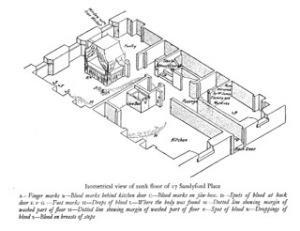
I attended a writers’ festival in York in 2012, and one of the authors I met there had written a book on self-publishing, which I bought as the concept made a lot of sense to me. I am fairly hopeless at new technology myself, but one of the recommendations he made was to create a website to promote my work. I appreciated how relevant such a suggestion was in today’s competitive environment, and a personal friend of mine made a living designing these things, so it seemed the obvious way to go. I also realised that a website would allow me to provide so much more detail about the original crime than I could feature in my novel, and also to add the little biographies that I had created for my characters during the writing process. Some of the readers of my earlier drafts commented that the names, dates and numbers of characters described could be quite confusing, and therefore it made sense to provide a separate source of reference using a dedicated website. The designer is Mirandi Van Staden, who also did an excellent job in creating the book cover from my own description.
If after all Alan’s answers to my questions above you are still wondering whether you will enjoy this book visit the website The Murder Tree and see what it is all about. As I read this book on kindle I didn’t realize there was a website until the end, and I’m not sure quite what made me check it out, but I’m glad I did!
Now onto my most important question as someone who has read The Murder Tree:
You hinted in your comment to me that there was going to be another book; is it going to feature any of the same characters? I think I may be a little in love with Billie Vane.
A second novel is in the early stages of research and plotting, and because the feedback from ‘The Murder Tree’ has been 99.9% positive, I feel it makes sense for book number two to have some continuity. So yes, two (and possibly three) of the characters will make a second appearance. The subject will again be an historical mystery and investigation (based on a true story), and this time the central character will be Billie Vane! (You heard it here first…)
Well on that very happy note I want to thank you for providing wonderfully informative answers to all my questions!
Here is a taster of what a happens when Chrissie’s father is flying across the Atlantic, before her life is altered forever….
His attention shifted to the small video screen set into the seat in front of him. Another reminder of the chaos that had just entered his life: a representation of the northern hemisphere, framed in a touch screen box, gave a course across the Atlantic for all one hundred and eighty two passengers presently in Economy Class. Alternating with an on-screen message of welcome from Continental Airlines was a reminder of the miscellany of entertainment channels awaiting the passengers aboard Flight CO17. Fersen shook his head in resignation and raised his hand in front of him, idly considering if he should simply turn the damn thing off altogether.
But then the picture on screen changed as if part way through a movie, the image now displaying a city street with elegant Georgian buildings, proudly flanked at ground level by iron railings. Into view in the foreground came a plodding horse shackled to a two-wheeled cart, with a man and a young lad of about fourteen at the traces. Their clothing was old-fashioned: simple work-shirts and trousers with heavy boots, while the young lad also appeared to be wearing an apron. At the back of the cart sat several large metal churns, a couple of wooden crates, and some enamel jugs. Fersen watched in fascination as the lad leapt off the cart, grabbed a heavy jug off the back, and climbed the steps to ring the bell of a stone-fronted building with a heavy front door. The screen in front of him was too small for much detail, but he thought he could just make out the number 17 etched in gold leaf onto a glazed panel above the door.
Then it felt as if turbulence had hit his ribcage. The city street scene was clearly depicted on all three monitors in front of him: a triple image that brought shock recognition of the house Fersen had left in anger just a few hours ago.
Beads of sweat now leaked from every pore. He sat transfixed while the focus gradually shifted past the cart, past the boy as he stood waiting patiently on the steps, and on to the handle of the door itself. Now oblivious to the detritus of the twenty first century that surrounded him, Fersen was totally absorbed by a parallel world of long ago – yet still so familiar. He caught his breath as the door swung open, and witnessed the look of surprise on the milk-boy’s face. Framed in the doorway stood the corpse-like image of an old man: a stooped figure in a black coat, waistcoat and winged collar. The face filled the screen, cold black eyes that looked directly into Fersen’s heart while the thin lips moved silently. He stared back, his own mouth moving in a similar pattern. A spasm of pain surged through his upper body and his hands clutched the left side of his chest. He squeezed his eyelids together in a vain attempt to shut out the images on screen. But then his mouth was forced to open wider as his lungs made a futile bid to function without oxygen.
The Murder Tree – Amazon UK
The Murder Tree – Amazon US


